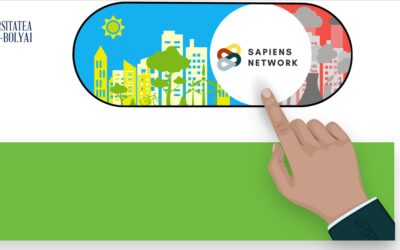In May 2023, our Early-Stage Researchers Natalia Spataru, Valentina Bianchini and Xinyue Xue were seconded to our partner organisation George Washington University Law School (GW Law) in Washington DC, USA. In this blog post, Xinyue shares her experience researching relevant rules and practices for promoting small businesses in US federal procurement. Her PhD project at the University of Birmingham focuses on facilitating Small and Medium-sized Enterprises (SMEs) in public procurement.

From left to right: Prof Christopher Yukins, Xinyue Xue, Natalia Spataru, Valentina Bianchini, Visiting Assoc Prof Annie Willett
Introduction
Small businesses have always been vital to the American economy, and they receive bipartisan support.[1] Among these, one important supportive measure is ensuring that a fair proportion of government contracts are reserved for small businesses. Pursuant to the Small Business Act, the government should “aid, counsel, assist, and protect, insofar as is possible, the interests of small-business concerns… to insure that a fair proportion of the total purchases and contracts or subcontracts…be placed with small-business enterprises”.[2] An independent federal agency, the Small Business Administration (SBA), was created by this Act in 1953 to achieve these aims.
Set-aside Programs
The support for small businesses in federal procurement is mainly implemented through set-aside programs and sole-source contracts. According to guidance published by the SBA, set-aside can take the form of entire contracts reserved for small businesses or parts of large contracts. Sole-source contracts can be reserved for a small business under authorisation. More specifically, set-aside programs include set-aside for general small businesses without special attributes other than being small and socioeconomic programs, such as the 8(a) program, the Women-Owned Small Businesses (WOSB) program, the Service-Disabled Veteran-Owned Small Businesses (SDVOSB) program, or the Historically Underutilised Business Zone (HUBZone) program. Federal agencies can also design further socioeconomic programs in addition to these.
For purchases at or below US$10,000, a competitive procurement procedure is not obligatory, according to Federal Acquisition Regulation (FAR) § 13.201. Federal agencies shall reserve purchases valued between US$10,000 and US$250,000 exclusively for small businesses unless the contracting officer reasonably expects there to be less than two or more small businesses bidding for this contract, according to FAR § 19.502-2. For contracts above the threshold of US$250,000, federal agencies shall set aside the contract when they expect that at least two responsible small businesses will offer the product at a reasonable price. To make this feasible, FAR requires agencies to conduct market research before publishing a solicitation (call for tenders) with an estimated value of more than US$250,000. Socioeconomic programs are prioritised over general small businesses. In addition, set asides for socio-economic programs cannot be made if the requirement would be fulfilled through the award of Federal Prison Industries, Inc or Javits-Wagner-O’Day Act participating non-profit agencies for the blind and severely disabled.[3]
Apart from set-aside programs, where small businesses act as prime contractors, small businesses are encouraged to participate as subcontractors. Pursuant to FAR § 19.701, a subcontracting plan is required if a contract valued above US$750,000 (non-construction) or US$1.5 million (construction) is not awarded to a small business.
Function of the Small Business Administration (SBA)
To bid for a set-aside contract, businesses can self-certify if they meet the criteria of a small business or one of the socioeconomic programs. If the self-certification is challenged by a third party, such as another bidder, the final decision should be made by the SBA. In federal contracting, the SBA is a bridge between small businesses and agencies to facilitate the implementation of set-aside programs. Besides, the SBA Office of Government Contracting and Business Development works with federal agencies to pursue the target of the federal government awarding at least 23% of prime contract dollars to small businesses.

Source: U.S. Small Business Administration, FY 2023 Goaling Guidelines, Office of Policy, Planning & Liaison, Office of Government Contracting & Business Development, October 2022.
The SBA publishes an annual scorecard to measure how successful federal agencies are in contracting with small businesses and socioeconomic concerns. However, these targets are not always met. For example, the target of the WOSB program was only met in 2015 and 2019.[4] Double counting against different programs can make the results look better than they are.[5]
Comparison with the EU approach
Although the US has been reserving contracts for small businesses for around 70 years, the approach faces heated debate. Advocates assert that this eliminates the potential discrimination against small businesses in public procurement, while opponents criticise it for discriminating against large businesses. The US Congress stated that the intention of supporting small businesses is not to discriminate against large businesses. Rather, the intention is to create a level playing field when necessary to preserve “free competitive enterprise”.[6] In this respect, there is some common ground between the European Union (EU) and the US. In the EU, the contribution and potential of SMEs to the single market is also valued. Instead of reserving public contracts for SMEs, the EU requires Member States to make it the default approach for contracting authorities to divide contracts into lots, or explain why this could not be done.[7] Both division into lots and set-aside programs encourage the participation of SMEs in the public marketplace. Set-aside programs limit the supplier base only to small businesses and are result-oriented. Lots, on the other hand, remain open to large suppliers, which is a process-oriented approach. There is no simple choice between the set-aside option or the division of lots to promote SMEs to participate in public procurement. It depends on a country’s public procurement principles and the relevant requirements of regional/international agreements. Public procurement can be an important tool to fully unleash SMEs’ potential, but it requires delicate rulemaking and incentives.
Reference list:
[1] The size standard of small businesses varies across industries, designed by the SBA. The size of a small business in some industries can be comparable to a medium-sized business in the EU.
[2] Section. 2 (a) of the Small Business Act
[3] U.S. Small Business Administration, ‘Set-aside procurement’, https://www.sba.gov/partners/contracting-officials/small-business-procurement/set-aside-procurement
[4] U.S. Small Business Administration, ‘Small business procurement scorecard overview’, https://www.sba.gov/document/support-small-business-procurement-scorecard-overview
[5] Jason Wiens, Michelle Kumar, ‘A Look at Women-Owned Small Business Contracting’, https://bipartisanpolicy.org/blog/women-owned-small-business/
[6] Section. 2 (a) of the Small Business Act
[7] Article 46 of Directive 2014/24/EU

George Washington University was established responding to the first US President George Washington’s wish to create a national university in the federal city. GWU is a university without walls. The law school, GW Law, locates at the heart of the city, Foggy Bottom, four blocks from the White House and across the street from the World Bank and International Monetary Fund. Apart from its key location, GW Law is also the academic birthplace of the study of government procurement law in the US, offering a preeminent government contracts law program to procurement lawyers and professionals worldwide.







0 Comments